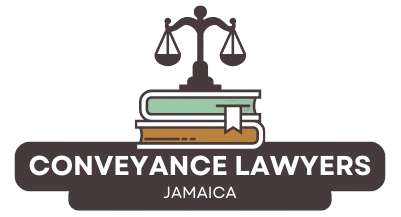Transferring property ownership in Jamaica is a detailed legal process that, when handled correctly, ensures the buyer acquires a clear title and the seller fulfills all contractual obligations. At Conveyance Lawyers ja, our lawyers guide clients through each phase, coordinating paperwork, government filings, and tax payments so every transfer meets Jamaican property law and closes without unwanted surprises.

Transferring property ownership in Jamaica is a detailed legal process that, when handled correctly, ensures the buyer acquires a clear title and the seller fulfills all contractual obligations. At Conveyance Lawyers ja, our lawyers guide clients through each phase, coordinating paperwork, government filings, and tax payments so every transfer meets Jamaican property law and closes without unwanted surprises.
Drafting the TR1 form
The Transfer Instrument, commonly known as the TR1 form, is the principal document used to effect the transfer of ownership of registered land in Jamaica. Our team drafts this crucial form, ensuring it accurately reflects the details of the buyer, seller, and the property, including its volume and folio number from the Certificate of Title. The TR1 must be signed by both the transferor and the transferee in the presence of a Justice of the Peace or Notary Public; the witnessing requirement gives the form legal force and reduces fraud risk.
Verifying existing title
Before drafting the TR1, a comprehensive title search is carried out at the National Land Agency to verify the existing Certificate of Title. This step confirms legal ownership and highlights any encumbrances, caveats, or restrictive covenants that might need attention before closing. If a caveat or mortgage surfaces, our lawyers coordinate with the relevant parties—often banks or prior lien holders—to arrange discharges or partial releases so the buyer receives clear title on registration day.

Lodgment & Registration
Once all documents have been executed, they must be filed with the correct public bodies for the transfer to take effect. Proper lodgment is more than handing papers across a counter; each form must be checked for signatures, matching names, stamp impressions, and payment receipts. A missing item can trigger rejection, forcing the parties back to square one and potentially jeopardising financing deadlines.
Our lodgment kit includes certified copies of identification, proof of tax payments, and any supporting statutory declarations required by the National Land Agency or Tax Administration Jamaica. By packaging the submission in a format examiners recognise, we shorten turnaround times and avoid unnecessary requisition letters.
Submitting to NLA
After the TR1 and other supporting documents (Agreement for Sale, tax clearance certificates, and valid ID cards) are executed, they are lodged with the National Land Agency. The NLA registers every land transaction in Jamaica and issues new Certificates of Title. Our lawyers confirm that each form is stapled or bound according to NLA practice, that fees are paid in the correct cashier section, and that a stamped receipt is obtained for tracking.
Paying stamp duty
Before the National Land Agency will accept the transfer, stamp duty and transfer tax must be settled with Tax Administration Jamaica. Our team calculates the correct sums, prepares the payment vouchers, and submits them through the TAJ e-filing portal where applicable. Once TAJ issues the tax clearance certificates, we attach them to the NLA bundle so the registration examiner can link payment to the specific transfer.
Post-Registration Steps
The process doesn’t end with the NLA’s approval; several finishing actions ensure the new title is fully integrated into everyday use and recordkeeping. We track each application until the National Land Agency prints and seals the updated Certificate of Title, then schedule collection or courier delivery to the client. Having the original instrument in hand is vital before releasing purchase funds held in escrow or drawing down construction loans tied to the land.
Our team also walks clients through notifications that follow registration. Banks need the updated title for collateral files, insurers must amend policy schedules, and developers may have to update marketing materials or homeowner association records. By ticking off these final tasks promptly, buyers and sellers transition smoothly to their next project.
After collecting your new Certificate of Title, the next step is to ensure you’ve got everything in order before formal work begins—see our guide on How to Prepare for a Conveyancing Transaction in Jamaica for a full document checklist and financial readiness tips.
Collecting the new title
Once the National Land Agency completes registration, it issues a new Certificate of Title in the name of the new owner. We monitor NLA progress, collect the title as soon as it is ready, and verify the printed details for accuracy. The certificate is then delivered to the client or their lender, providing definitive proof of ownership under Jamaican property law.
Notifying utilities & agencies
After the successful transfer and issuance of the new Certificate of Title, it is essential to notify utility providers—electricity, water, internet—and relevant government agencies such as the parish council for property tax. Prompt updates prevent billing misdirection and ensure uninterrupted service. Conveyance Lawyers JA supplies each client with a checklist of entities to contact, along with template letters, completing the cycle of a secure and efficient real estate transaction.
